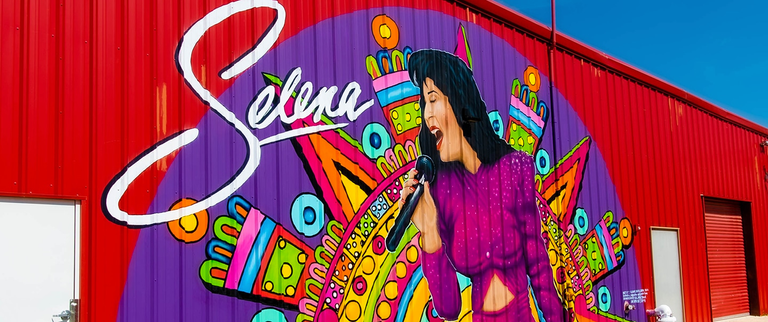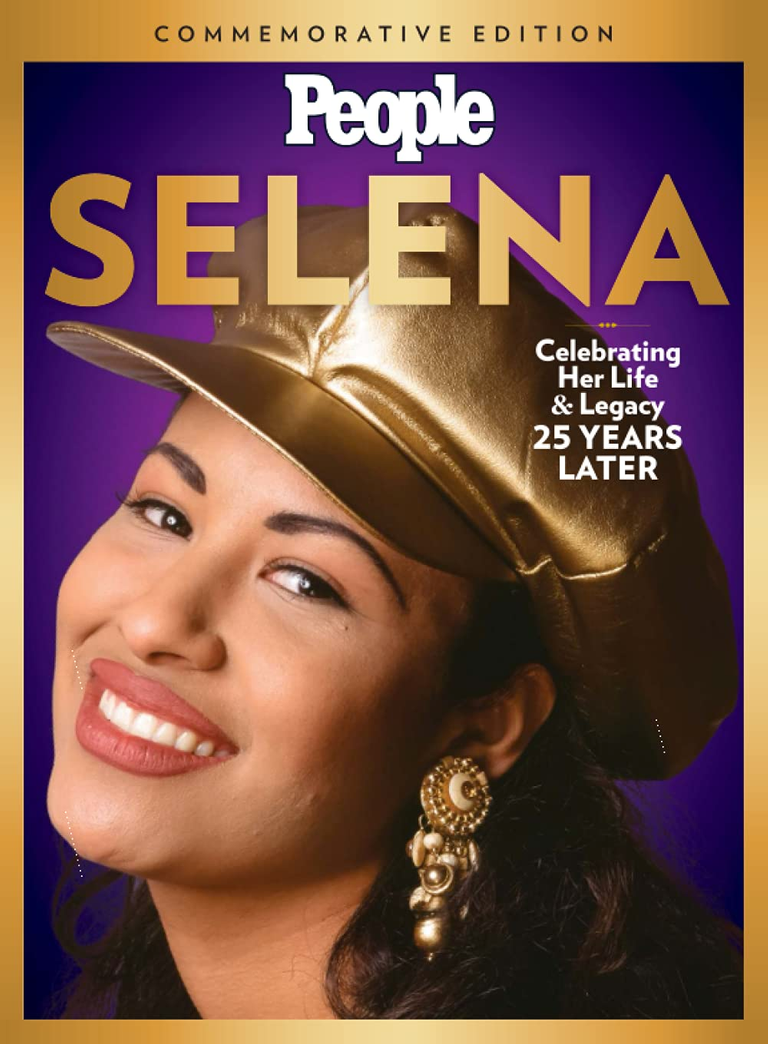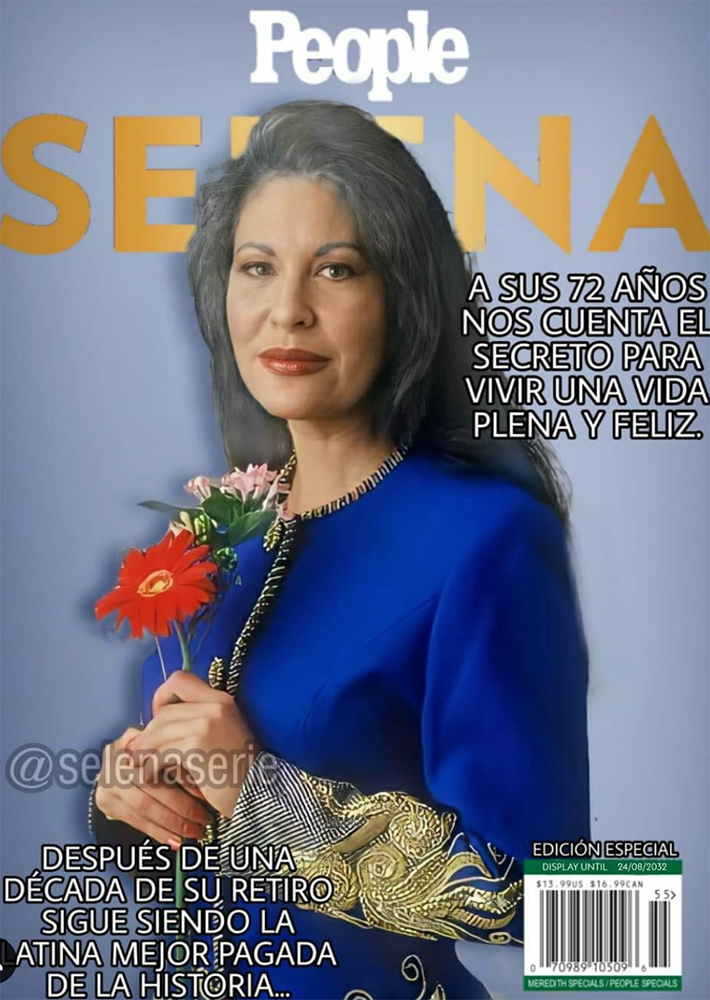
A casi 27 años de su trágica desaparición física, el legado de Selena Quintanilla en la industria musical sigue más vigente que nunca: es la reina eterna del Tex-Mex, género que catapultó al mercado general dentro y fuera de los Estados Unidos; vendedora de millones de discos; ícono superlativo de la biculturalidad; y, creadora de tendencias musicales, comerciales y de la moda. Hoy en este post, los invito a hacer un recorrido por los diferentes géneros musicales que interpretó la artista en su corta, pero prolifera carrera, música que aún resuena entre los latinoamericanos de diferentes países y que sigue cautivando a las distintas generaciones.
Almost 27 years after her tragic death, Selena Quintanilla's legacy in the music industry is as strong as ever: Eternal queen of Tex-Mex, a genre that she catapulted to the mainstream market inside and outside the United States; million-selling singer; supreme icon of biculturalism; and, creator of musical, commercial and fashion trends. Today in this post, I will invite you to review the different musical genres that the artist interpreted in her short but prolific career. Her music still resonates among Latin Americans from different countries and continues captivating different generations.

La Tecnocumbia
Selena fue la primera cantante femenina en promover la tecnocumbia. Este es un género musical generado por sintetizadores de sonido, el cual mezcla la música mexicana, el pop, la polka y ritmos caribeños y suramericanos como la salsa, el merengue y la cumbia. Selena popularizó las tecno-cumbias con canciones como La Carcacha,"Bidi Bidi Bom Bom", “Techno Cumbia", "Como la Flor", " Si una vez dije que te amaba", “Amor Prohibido”," El Chico del Apartamento 512" y "Baila esta Cumbia", entre otros . Todos estos sencillos fueron populares que en la voz de la extraordinaria cantante, y varios de ellos alcanzaron lugares importantes en la lista de éxitos del momento. Aquí, nombraré otras dos tecnocumbias que me gustan de Selena y que no son tan conocidas como las mencionadas anteriormente.
Selena was the first female singer to popularize technocumbia. This is a musical genre generated by sound synthesizers. It mixes Mexican traditional music, pop, polka and Caribbean and South American rhythms such as salsa, merengue and cumbia. Selena popularized techno-cumbias with songs such as "La Carcacha", "Bidi Bidi Bom Bom", "Techno Cumbia", "Como la Flor", "Si una vez dije que te amaba", "Amor Prohibido", "El Chico del Apartamento 512" and "Baila esta Cumbia", among others. All these singles were popular in the voice of this extraordinary singer, and several of them reached important places in the music charts of the moment. Here, I will name two other technocumbias that I like the most, and which are not as well known as the ones mentioned above.
Fotos y recuerdos
This song is a cover of the Pretenders' 1983 single "Back on the Chain Gang", written by Chrissie Hynde. The Spanish lyrics were written by the band's keyboardist, Ricky Vela. The song, a cumbia with a rock mix, retains the melody of the original song by The Pretenders.
La Llamada
"La Llamada" is an up-tempo cumbia song composed by A.B. Quintanilla and backing vocalist Pete Astudillo. "La Llamada" describes a woman who tells her boyfriend not to call her anymore, since he has been cheating her with another woman.
Rancheras
Selena included Mariachi songs on her album "Entre a Mi Mundo" and "Amor Prohibido". Her voice tone was perfect for this genre, so her rancheras were all hits. She could have recorded complete ranchera albums and would have reached unimaginable sales in Mexico, USA and Latin America, no doubt. Selena's most famous rancheras are "¿Qué Creías?" and "No me queda más". These songs are very emotional and they portray an extraordinary interpretation of the artist.
¿Qué Creías?
No me queda más
Tú, solo tú.
Banda (Norteño)
Small group style music
Within the traditional Mexican genre, there is the banda style or norteño as it is also known. In this style, the main instrumentation relies on the accordion and the bajo sexto. Selena also popularized songs in such style: "Tu desprecio", "Las Cadenas" and "Vuelve a Mi".
Tu desprecio
Las Cadenas
Vuelve a Mi
Boleros
In videos of the Quintanillas' family, you can see how in their beginnings, Selena and the Dinos performed boleros in their presentations in restaurants and festivals. Recordings of this genre were included in their first albums. Such is the case of the famous bolero "Cien Años" included in their 1988 album Preciosa.
Cien Años
Rock
Selena and Los Dinos also experimented with more mainstream rhythms such as rock, pop and disco. As for the former, the song "Ya No" was the only song of the genre recorded by the artist and there is no record of her singing it live. This song shows Selena's rock influence from Chris Perez, the band's guitarist and Selena's husband. Like everything she performed, with that wonderful voice she had, "Ya no", although one of the lesser known songs of the artist, is a grandiloquent sample of her versatility and talent in singing.
Ya no
Disco
Disco
Selena not only grew up listening to mariachis and boleros. As an American, she was also influenced by the popular rhythms of the time, such as disco and electro-pop. That is why from the very beginning of her career, she experimented with these rhythms. Selena also included disco numbers in her performances. Selena's most famous was the disco medley she did for her unforgettable concert at the Houston Astrodome. In this medley, she performed the following songs: "I Will Survive" by Gloria Gaynor; "Funkytown" by Lipps Inc. "Last Dance" and "On the Radio" by Donna Summer and "The Hustle" by Van McCoy.
TechnoPop
The electronic pop sounds of the eighties and early nineties were also featured in Selena's recordings. The following is her varied pop music catalog that includes dance-pop, electronic dance music, funk, R&B, pop ballads recorded in Spanish and English.
Amame
Missing my baby
Always mine
Dónde quiera que estés
I'm getting used to you
Captive Heart
I could fall in love with you
El Legado de Selena Quintanilla
Selena Quintanilla's Legacy
In her short but successful career, Selena Quintanilla broke cultural, linguistic and gender barriers. Today, nearly three decades after her death, Selena is one of the best-selling Latin artists in the world, selling an estimated 90 million copies. Her "Greatest Hits" album was the first album recorded by a Latina artist to top the prestigious Billboard chart. Her albums "Amor Prohibido" and "Dreaming of You" are among the best-selling albums in Latin music history. She was the first Latina artist to be the face of Coca-Cola and today her brand continues selling and selling with her movies, series, cosmetics and clothing lines. Her music continues to be downloaded by millions of people on digital platforms, and singers such as Jennifer Lopez, Selena Gomez and Camila Cabello, continue paying tribute to her in their concerts.
Selena became a legend because of her talent, but mostly because of her sudden and tragic death. This is the main reason why many of us idealize her and think of her as the eternal queen of Latin music; who knows how far she could have gone with her talent? Those of us who remember her continue to admire her beauty, simplicity, humility, naturalness and extraordinary voice. Greetings and thanks for stopping by.
Bonus:
Selena en una entrevista para el programa " Cristina".
Selena in an interview for the talkshow "Cristina".
Memes sobre Selena
Selena Memes
One of the thousands of memes found on the internet. I find this one very funny😂 😅. I think it would be like this too.
One of the thousands of memes found on the internets. I find this one very funny😂 😅. I think it would be like this too 😂.


